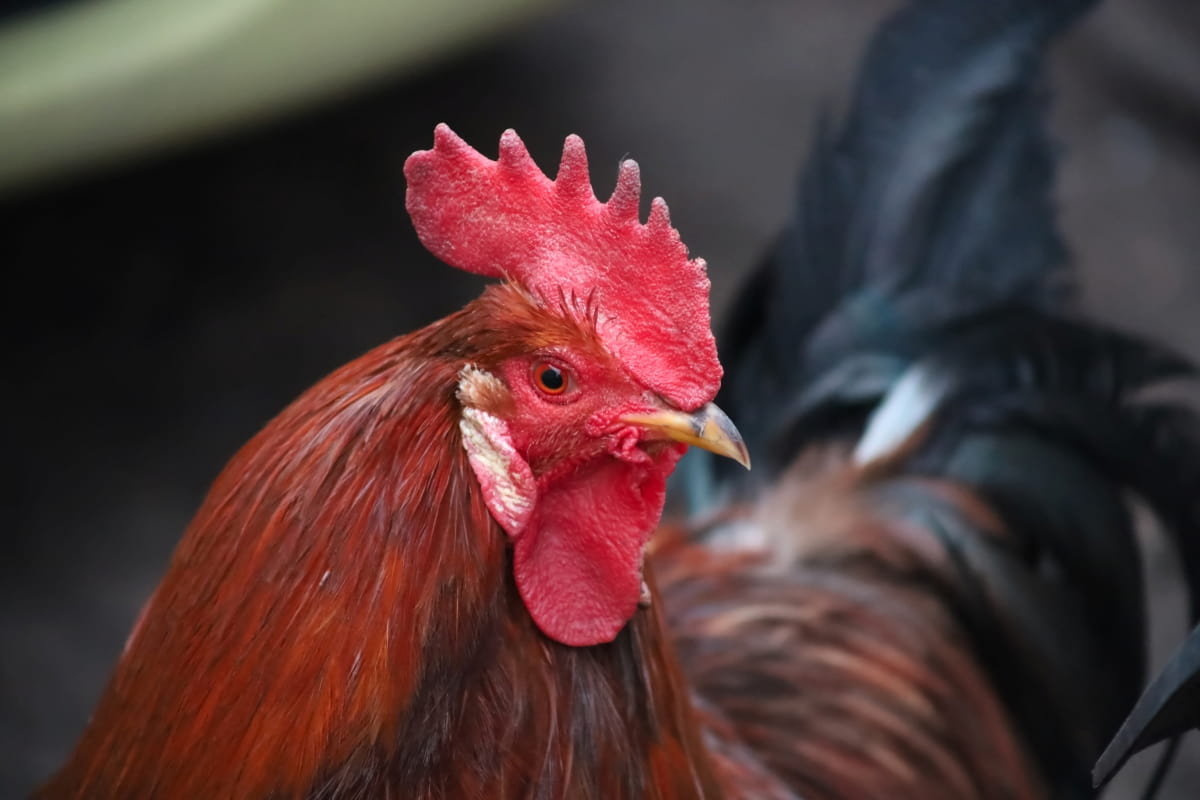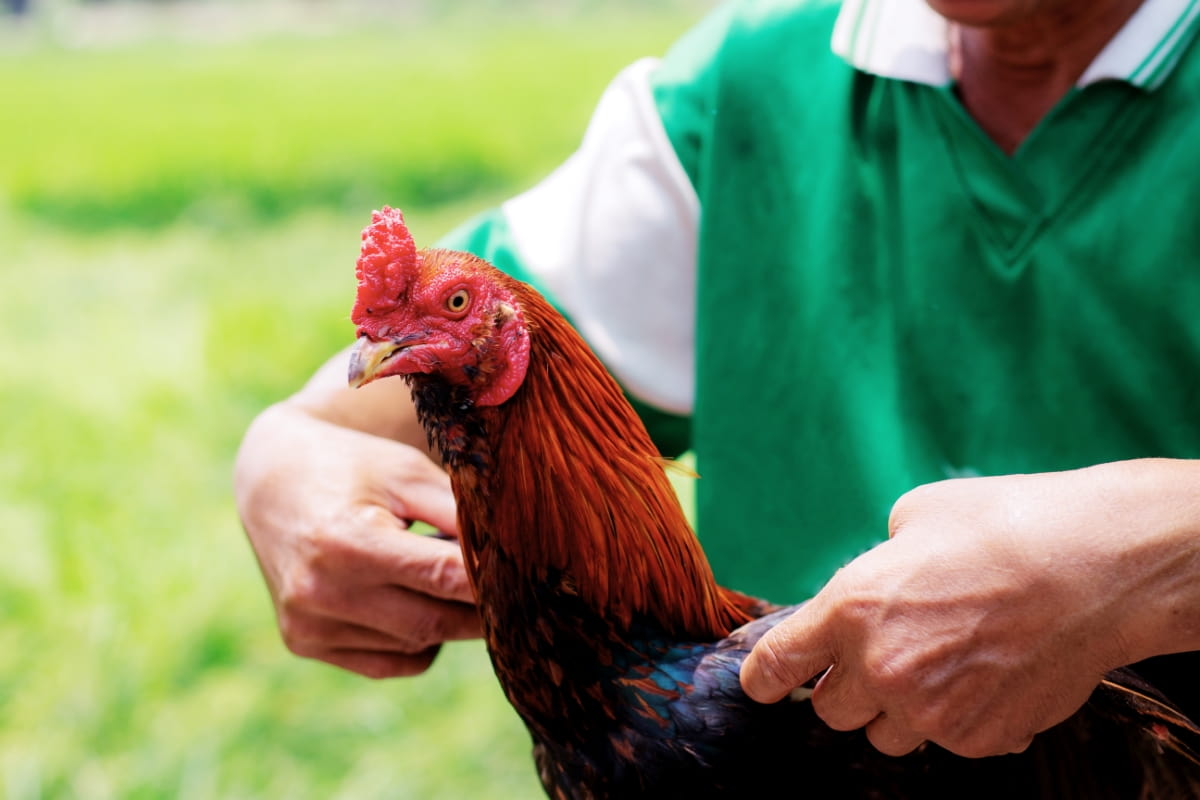The Lacy Roundhead Gamefowl traces its lineage back to the early 19th century, originating in the United States. Developed by the Lacy brothers of Texas, these birds were bred for their exceptional fighting abilities and tenacity in the pit. The bloodline has been meticulously maintained over generations, ensuring its prominence in cockfighting circles worldwide.
Introduction to Lacy Roundhead Gamefowl
Lacy Roundhead Characteristics and Traits
They are known for their sleek, athletic build and prominent round heads. They exhibit a variety of colors, including black, brown, and red, with vibrant plumage. These birds possess sharp, powerful beaks and strong legs.
Lacy Roundhead Fighting Style
Renowned for their aggressive yet calculated approach, Lacy Roundheads are tactical fighters. They possess exceptional speed and agility, allowing them to maneuver in the arena swiftly. Their fighting style is characterized by quick, precise strikes aimed at exploiting their opponent’s weaknesses.
Lacy Roundhead Price
The price of these chickens can vary depending on factors such as age, pedigree, breeding quality, and availability. Prices range from $50-200 or more per bird, particularly if they are of high quality or come from reputable breeders.

The Significance of Lacy Roundhead in Gamefowl Culture
Role in Gamefowl Competitions
Lacy Roundheads hold a revered status in gamefowl competitions, revered for their unparalleled fighting abilities. These birds have earned a reputation for their tenacity and determination, often dominating opponents with their agility and calculated strikes.
Popularity Among Breeders
Breeders seek to preserve and enhance the traits that make these birds exceptional fighters, carefully selecting breeding pairs to produce offspring with superior qualities. The demand for quality Lacy Roundheads remains consistently high, with breeders dedicated to maintaining the integrity of the bloodline while striving for excellence in performance.
Breeding Lacy Roundhead Gamefowl
Selecting Breeding Stock
Look for a Lacy Roundhead pullet that exhibits the desired traits, such as agility, aggressiveness, and endurance. Assess physical characteristics like body conformation, feather quality, and coloration. Consider the birds’ performance history and lineage to ensure they come from strong genetic backgrounds.
Breeding Strategies for Optimal Traits
Practice line breeding, which involves mating closely related birds to reinforce desirable characteristics. Outcrossing with birds from different but complementary bloodlines can introduce genetic diversity while maintaining desired traits. Utilize performance-based selection, breeding Lacy Roundhead chickens with proven track records in the pit to ensure offspring inherit superior fighting abilities.
Managing Genetic Diversity
Implement rotational breeding systems, outcrossing, and line-breeding techniques to preserve genetic variability and minimize the risk of detrimental traits becoming fixed in the population. Regularly assess the health, vigor, and performance of offspring to ensure the continued success of the breeding program.
Raising Lacy Roundhead Baby Chickens
Incubation and Hatching Techniques
- Choose fresh, fertile eggs from healthy Lacy Roundhead breeding stock.
- Maintain consistent temperature (around 37.5°C) and humidity levels (around 50-55%) throughout the incubation period, typically 21 days for chicken eggs.
- Turn the eggs several times a day, either manually or using an automatic turner, to promote even development.
Brooding and Early Life Care
- Maintain a brooder temperature of around 35°C for the first week, gradually decreasing by 2-3°C per week until reaching ambient temperature.
- Provide clean, dry bedding material such as wood shavings or straw to absorb moisture and provide insulation.
- Offer high-quality chick starter feed and clean, fresh water at all times. Ensure feeders and waterers are easily accessible and kept clean.
Growth Milestones
- Week 1: Chicks should start to develop feathers and become more active. They will begin pecking at feed and water.
- Week 2-3: Feathers continue to develop, and chicks become more independent. Gradually introduce grit to aid in digestion.
- Week 4-6: Chicks transition to a grower feed and can be moved to larger housing as they outgrow the brooder. Monitor growth rate and adjust feed accordingly.
- Week 7-8: Chicks should be fully feathered and nearing maturity. Monitor for any signs of aggression or bullying as they establish their pecking order.
- Week 9 and Beyond: Continue to provide proper nutrition, housing, and care as chicks mature into healthy adult birds.
In case you missed it: Ultimate Guide to Cuckoo Marans Chicken: Facts, Egg Production, Raising, Care, Price, and Lifespan

Feeding and Nutrition
Nutritional Requirements Across Different Stages
- Baby Chicken Stage: Provide a starter feed containing around 20-22% protein for optimal growth and development.
- Grower Stage: As the best feed for Lacy Roundhead, transition to a grower feed with slightly lower protein content (around 16-18%) to support continued growth without excessive weight gain.
- Adult Stage: Offer a maintenance feed with around 14-16% protein to maintain optimal body condition and health.
Feed Types and Supplements
- Starter Feed: Formulated with higher protein levels to support rapid growth in chicks.
- Grower Feed: Balanced nutrition to support steady growth without promoting excess weight gain.
- Supplements: Provide grit for digestion, calcium supplements for egg production in breeding birds, and occasional treats like greens or insects for enrichment.
Managing Feeding for Optimal Health and Performance
- Offer feed at consistent times each day to establish a routine.
- Ensure feeders and waterers are clean and free from contaminants
- Monitor birds’ appetite, behavior, and overall health regularly to detect signs of nutritional deficiencies or health issues promptly.
Housing and Environment
Designing Suitable Living Conditions
- Construct a well-ventilated coop with adequate space for roosting and nesting boxes.
- Provide clean bedding material with straw or wood shavings for comfort and insulation.
- Ensure the coop is predator-proof with secure locks and fencing to protect birds from predators.
Space and Safety Considerations
- Allocate at least 4 square feet of indoor space per bird to prevent overcrowding.
- Install predator-proof fencing around the perimeter of the coop and run area.
Lacy Roundhead Health Care and Wellness
Common Health Issues and Prevention
- Respiratory infections, like infectious bronchitis, can be prevented through good ventilation and minimizing stress.
- Parasitic infestations, such as mites and worms, can be controlled through regular cleaning and deworming protocols.
- Nutritional deficiencies can be avoided by providing a balanced diet and access to clean water.
- Marek’s disease, a viral infection, can be prevented through vaccination of baby chickens.
Vaccination and Disease Management
- Vaccinate baby chickens against common diseases like Marek’s disease and Newcastle disease to prevent outbreaks.
- Biosecurity measures to avoid the risk of introducing pathogens to the flock.
- Regularly monitor bird health and behavior for early signs of illness, and consult a veterinarian promptly if concerns arise.
Injury Prevention and Care
- Minimize potential hazards in the coop and run area to prevent injuries such as cuts or sprains.
- Handle birds gently to avoid stress and potential injuries.
- Provide proper perches and roosts to prevent foot injuries.
- Administer first aid promptly for minor injuries and seek veterinary care for more serious conditions.
In case you missed it: Gramapriya Chicken Farming: Characteristics, Uses, Egg Production, and Raising Facts

Training and Conditioning
Preparing for Competitions
- Focus on improving stamina, agility, and fighting spirit through regular training Lacy Roundhead gamefowl sessions.
- Simulate competition conditions to familiarize birds with the environment and reduce stress on fight day.
- Monitor birds’ health and adjust training intensity accordingly to prevent overexertion.
Conditioning Programs
- Implement a structured conditioning regimen that includes regular exercise, flight training, and sparring sessions.
- Gradually increase the duration of training to build strength and endurance over time.
- Provide a balanced diet and nutritional supplements to support muscle development and overall health.
Rest and Recovery Practices
- Incorporate rest days into the training schedule to allow birds to recover and prevent burnout.
- Provide comfortable resting areas with clean bedding and proper ventilation.
- Monitor birds for signs of fatigue or stress and adjust training and rest periods accordingly.
Ethical Considerations and Legal Compliance
Understanding Gamefowl Legislation
- Familiarize yourself with local, state, and national laws regarding cockfighting and gamefowl breeding to ensure compliance.
- Obtain necessary permits or licenses for breeding and participating in competitions, if required.
- Stay informed about changes in legislation and advocate for ethical treatment of gamefowl within the bounds of the law.
Ethical Breeding and Raising Lacy Roundhead Chickens Practices
- Prioritize the health and welfare of gamefowl in all breeding and raising practices.
- Avoid practices that cause unnecessary harm or suffering to birds, such as overbreeding or neglect.
- Provide proper shelter, nutrition, and veterinary care to ensure the well-being of birds throughout their lives.
In case you missed it: Raising Norfolk Grey Chickens: A Complete Guide to Care, Breeding, and Benefits

Conclusion
In conclusion, the Lacy Roundhead gamefowl stands as a testament to the legacy of cockfighting cultures. With a blend of history, tradition, and exceptional performance, these birds continue to captivate breeders and competitors alike, ensuring their place in gamefowl lore.
Note: The images presented in this post are intended solely for representation purposes. The images are meant to serve as visual aids and should not be relied upon as accurate representations of their real-life counterparts.
- Feed Your Flock for Less: Top 10 Tips to Save on Chicken Feed
- Ultimate Guide to Ossabaw Island Hog: Breeding, Raising, Diet, and Care
- Hatching Answers: The Top 10 Reasons Your Chickens Aren’t Laying Eggs
- Eggs and Economics: Breaking Down the Cost of Raising Backyard Chickens
- Defend Your Greens: Proven Methods to Keep Iguanas Out of Your Garden
- Ultimate Guide to Cinnamon Queen Chicken: A Comprehensive Guide for Beginners
- Ultimate Guide to California Tan Chicken: Breeding, Raising, Diet, Egg-Production and Care
- Ultimate Guide to Marsh Daisy Chicken: Breeding, Raising, Diet, and Care
- 10 Types of Chicken Farming Businesses You Can Start for Profits